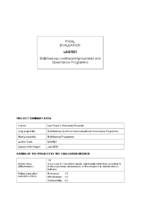Information
This project is closed since 30.06.2016.
- Country
- Laos
- LuxDev's Regional office
- Asia Office
- Partner execution agency
- Bolikhamxay Province, Planning and Investment Department
- PIC 2
- 2007 - 2010
- Implementation period
- 9 October 2009 - 30 June 2016
- Total duration
- 81 months
- Total budget
- 8,200,000 EUR
- Contribution breakdown
-
- Luxembourg Government
7,600,000 EUR - Local contribution
600,000 EUR
Documentation
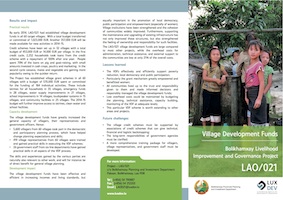
Village Development Funds by the Bolikhamxay Livelihood Improvement and Governance Project
Institutional challenges to water and sanitation promotion in rural Laos
Mid-term evaluation
Final evaluation
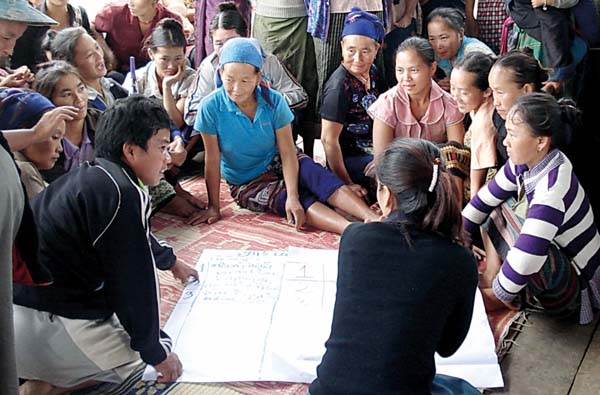
The Bolikhamxay Livelihood Improvement and Governance Project – LAO/021 is an integrated rural development project under the Lao-Luxembourg Cooperation Programme. The goal of the project is for Bolikhamxay Province to meet the 2015 targets of the Millennium Development Goals and the provincial poverty indicators. The specific objective is better livelihoods and quality of life for 36 000 people in the 60 poorest villages in the three poorest districts of the province, especially the about 26 000 people who lived on less than 0.5 EUR per day according to the 2009 poverty assessment. The population is mostly ethnic minorities living in traditional and relatively remote villages with difficult access to markets and public services. The economy is agricultural, mainly shifting cultivation on sloping land, supplemented by animal husbandry and limited paddy cultivation.
The project supports three main components. The first supports the provincial administration and all seven districts of the province regarding better governance directed at rural poverty reduction. This includes improved planning, administration, information systems, statistics, mapping and public service delivery. The two other components focus on the 60 target villages in the three districts of Khamkeut, Viengthong and Xaychamphone. The second component supports basic infrastructure development, especially schools and clean water supplies, but also improved road access, community meeting halls, markets, and dormitories for high school students from remote areas. The last component provides Village Development Funds (VDF) to the target villages, averaging 23 000 EUR per village, owned and managed by each community for credit and communal grant purposes.
The overall budget from the Government of Luxembourg is supplemented by an in-kind contribution by the Lao Government including all government salaries, office premises and amenities. The infrastructure component takes up 43%, whereas the VDF component accounts for 25% of the project budget. Hence, two-thirds of the funds are used for direct investments in the villages. The remaining monies are split equally between the governance component and project administration. The project is carried out jointly by the Provincial Planning and Investment Department as well as Lux-Development and in cooperation with relevant provincial departments, district offices, and with the 60 target villages. About 75% of the funds are delegated to these different administrative levels. A small technical support team looks after quality assurance and financial control on behalf of the project. The project office is located on the premises of the Bolikhamxay Provincial Planning and Investment Department in Pakxan.
The village investments have been greatly beneficial to the development in the target villages and suggest a development model that not only provides capital for investment, but also motivation, participation and empowerment of all parties involved. Moreover, as much as 70% of the funds are used for direct investments in the target villages, while the administrative and advisory overhead costs remain below 20%. Adhering to a stringent strategy for poverty reduction and for alignment with the government system has helped gaining acceptance by all parties of the high degree of delegation, participation and empowerment of the target population. Furthermore, the delegation of funds to village, district and province level gives a unique opportunity for synergy and exploration of the natural role of all administrative levels in support of the existing decentralization policy.
After five years of project implementation, the number of villages classified as poor has been reduced from 60 to 6 based on the original poverty criteria. Moreover, 55 out of the 60 target villages have more than doubled their household ownership with respect to wealth indicators, such as motorbikes, two-wheel tractors and housing standards. Since the target villages were among the poorest and the least serviced at the start of the project, these improvements are also greatly helping the target districts in attaining their targets as set in the provincial socio-economic development plan. The project support has also been effective and efficient in increasing local capacity, democracy, public participation, as well as empowerment, especially of women.
During 2015, the last year of the project, the main undertakings will be the consolidation of the VDFs in the 60 villages, the construction of 15 schools, some water supply schemes, further small scale infrastructure and the preparation of the next five-year socio-economic plan of the province, especially through better information systems. Moreover, the project will be helping associated projects in other provinces to adopt its successful implementation models.
Latest news
Laos - Donor coordination and mobilization meeting held in Bolikhamxay
Strengthening aid effectiveness at local level
A donor coordination and mobilization meeting was held on 13 December 2014 in Bolikhamxay Province, which is one of the target provinces of the Lao-Luxembourg Cooperation Programme in Central Laos. The purpose was to help strengthen the use of international development assistance in the Province and to help attract more support to focus work areas. The Provincial Planning and Investment Department, the Ministry of Planning and Investment (MPI), as well as the Provincial Administration Office jointly organized this meeting. The 80 participants comprised the governors of all seven Districts, directors of the provincial line agencies, representatives of four ministries as well as Lao and international staff of 12 donor agencies and international non-governmental organisations (INGO). The Bolikhamxay Livelihood Improvement and Governance Programme (LAO/021) supported the event financially and technically.
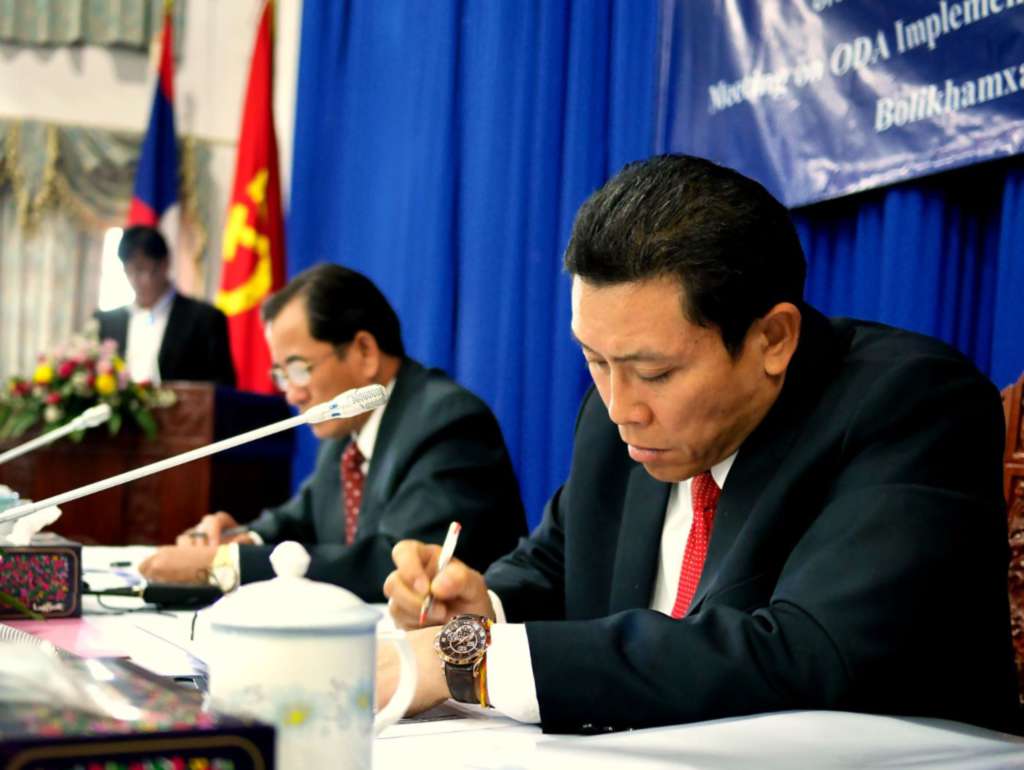
The meeting was held in the context of the Round Table Meeting format and was thus facilitated by the MPI. The Vice-minister of MPI, Dr. Kikeo Chanthaboury, co-chaired the meeting, during which he expressed his strong support to the intentions of the event, including the need for the best possible use of donor assistance.
Brief presentations were made on the progress of the Socio-Economic Development Plan (SEDP), the scope of the next five-year plan, the international development cooperation in the province, the decentralization policy, and on the operationalization of the Vientiane Declaration on Aid Effectiveness. The ensuing discussions identified practical ways on how the province and districts may improve the coordination of external assistance, the facilitation of development partners, and the mobilization of more assistance to the Province. Central to these efforts would be greater compliance with existing information systems, increased communication across sectors, and greater accountability towards agreed results and principles. On the donor side, further alignment and harmonization would be possible. The discussion also showed the need for improved coordination between national and local level, for instance regarding fund allocation to the provinces from national programmes, which is not always possible to predict and coordinate with other support, owing largely to communication issues. The attendees agreed to the need for improvements in these areas, for which purpose the Vice-governor, Dr. Souvannny Xaysana, encouraged the line agencies, district governors and other decision makers to work towards a concerted effort for a successful end to the 2011-15 five-year SEDP and a strong start to the next plan period.
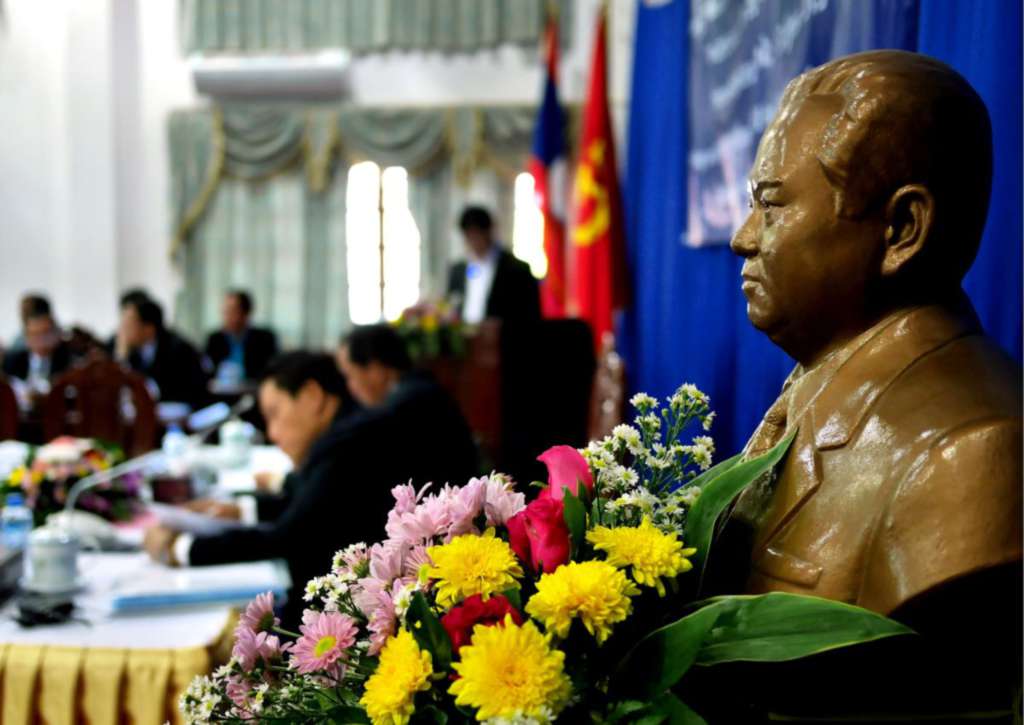
The event was one of the first provincial donor and project coordination meetings held in Laos. Lao and international participants expressed their appreciation of the value of the meeting, but also of the need for practical follow-up. The LAO/021 programme will continue to support this, including further back-up to information systems, sector-specific meetings, and capacity development in official donor aid and INGO facilitation. The project director, Mr Bounthan Vongsana, will coordinate this work locally on behalf of the provincial authorities, and mobilize technical and strategic backstopping from the MPI. In this manner, development cooperation in the province and districts stand a better chance for qualitative and quantitative improvements by the time the next five-year SEDP starts in October 2015.


